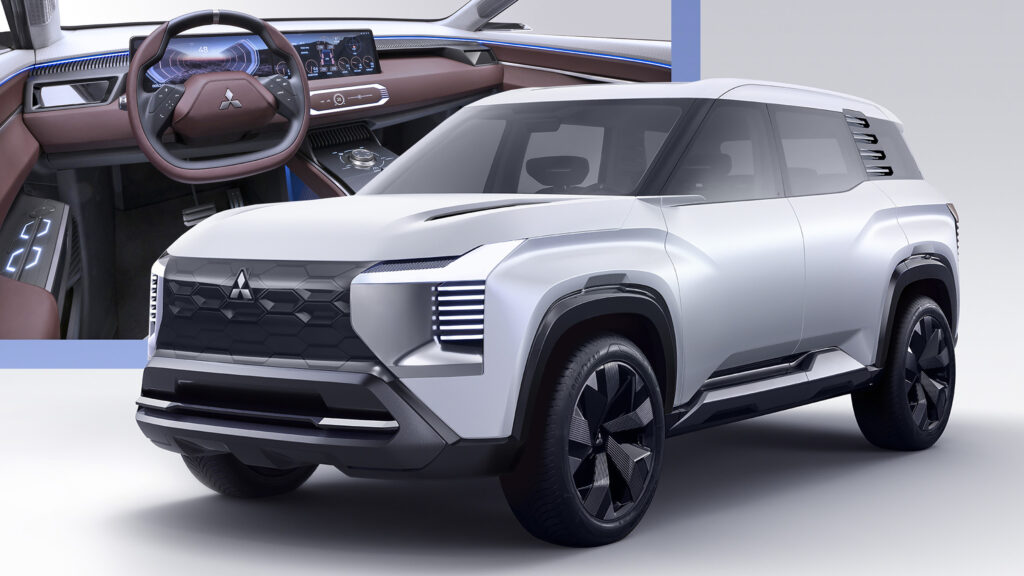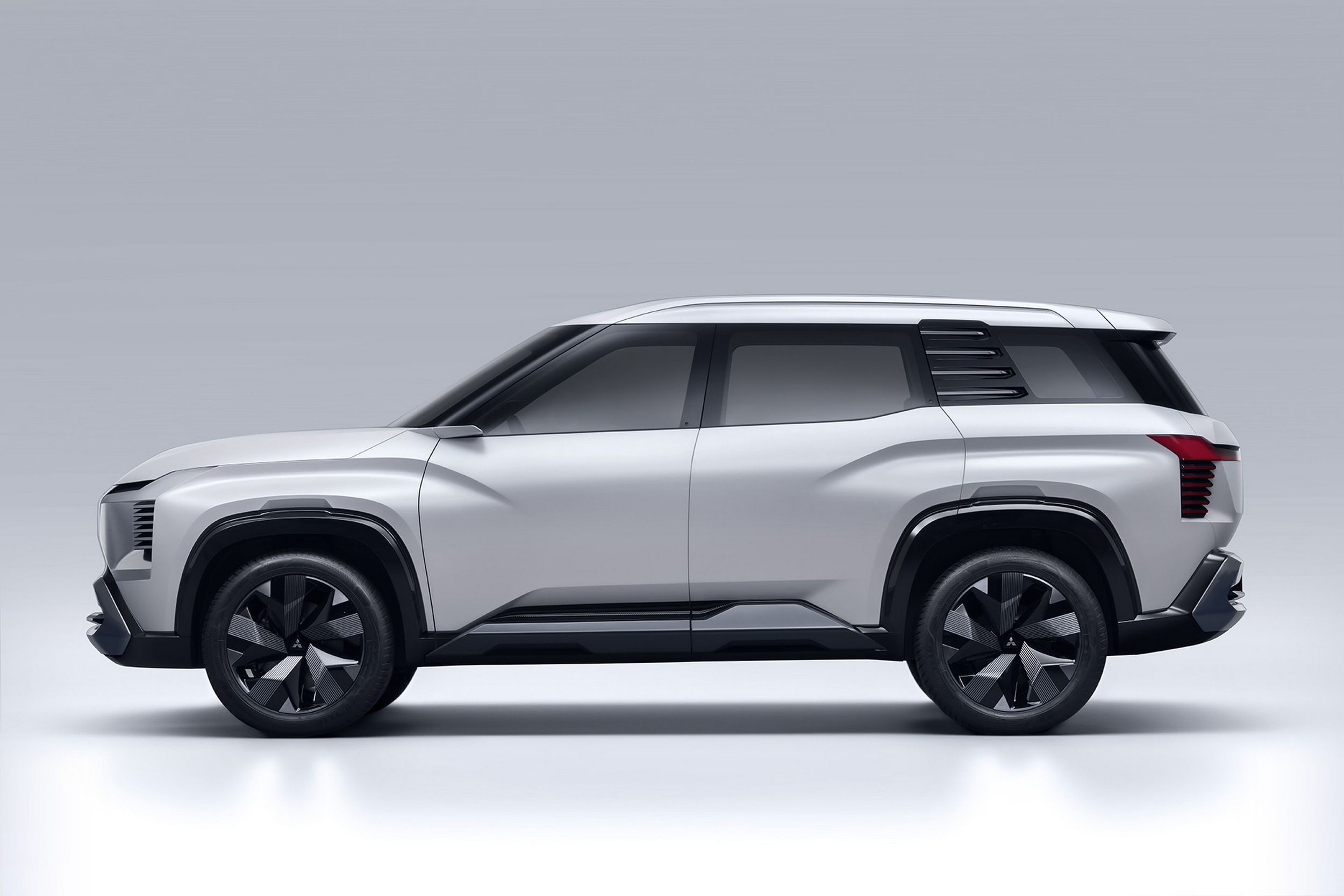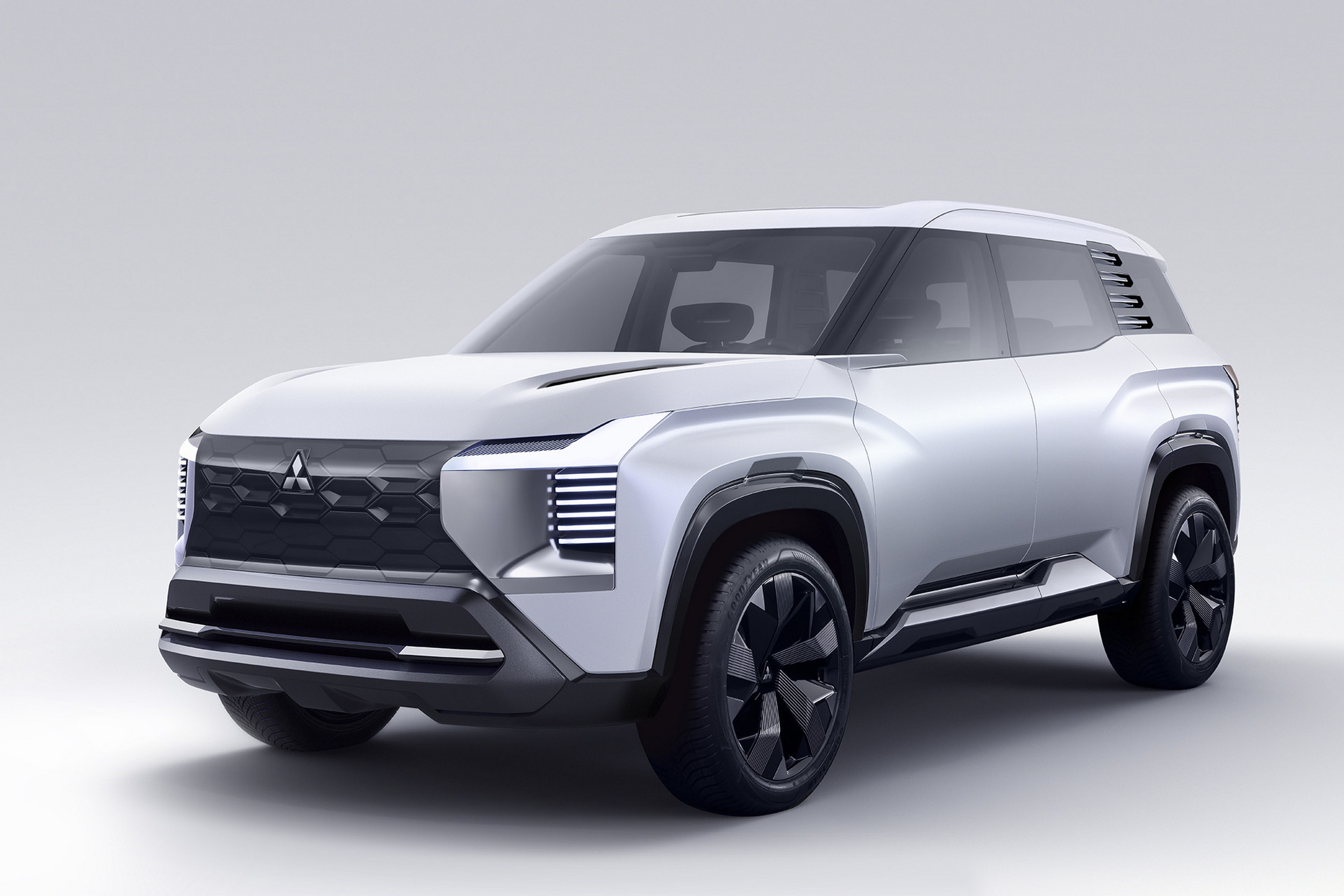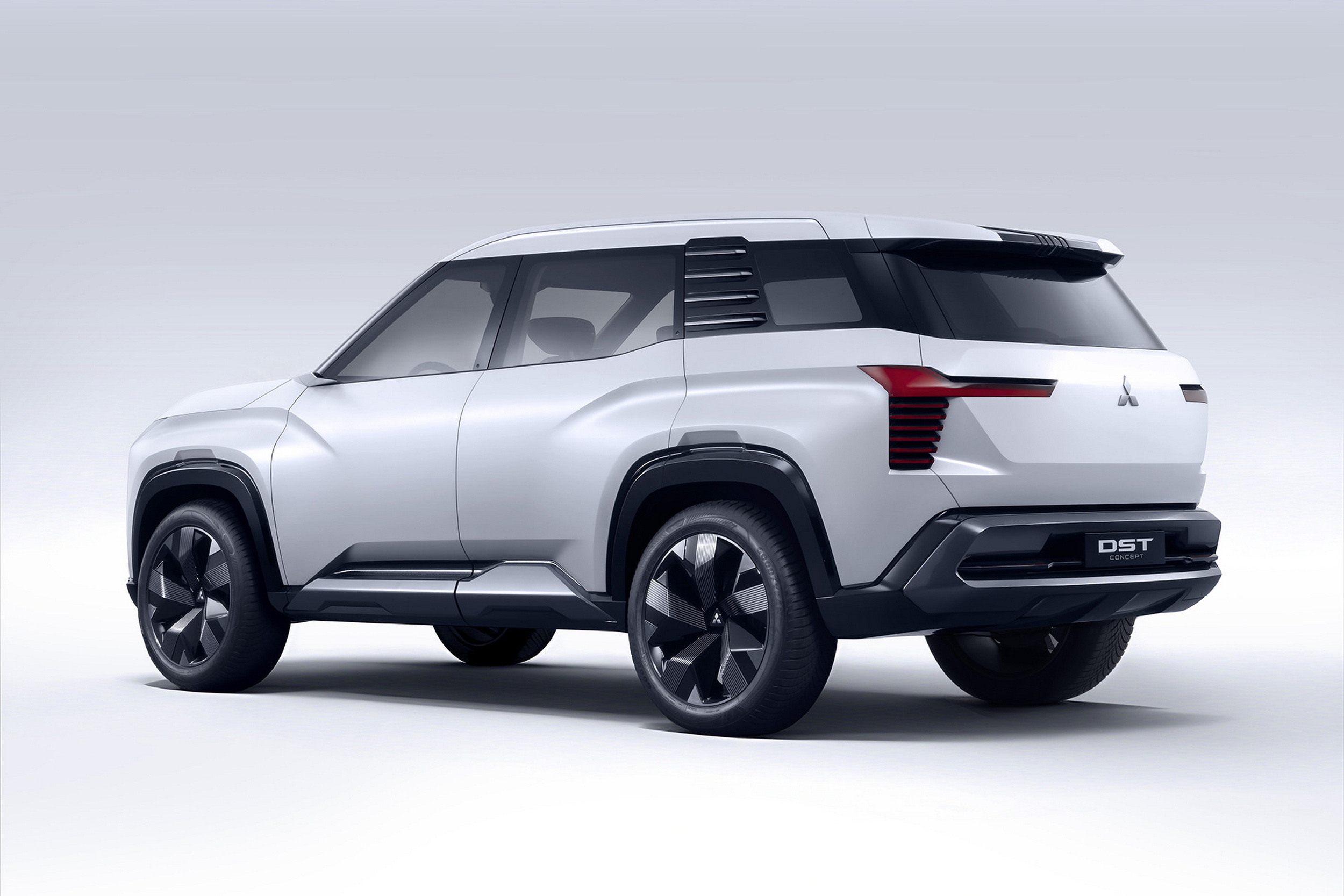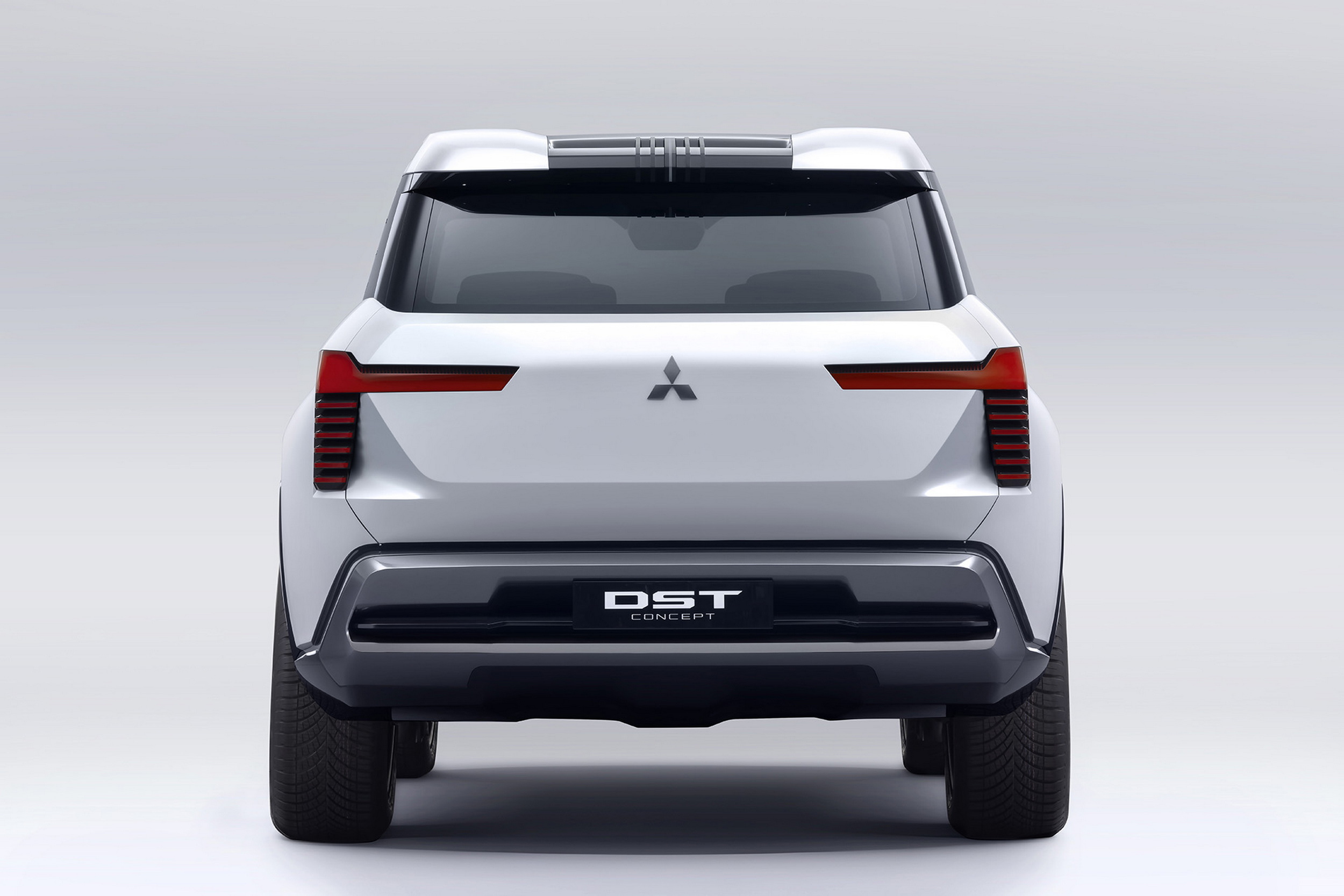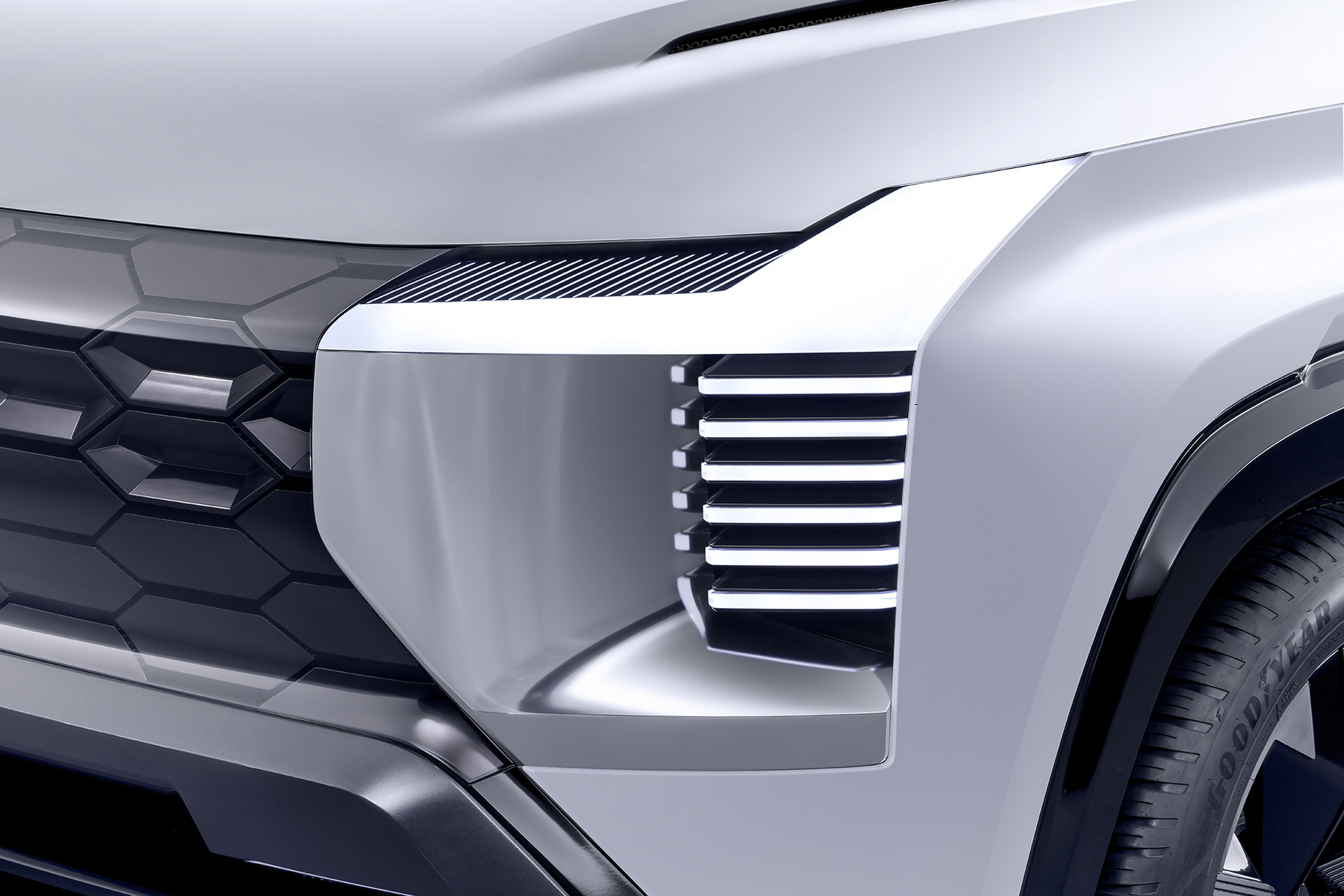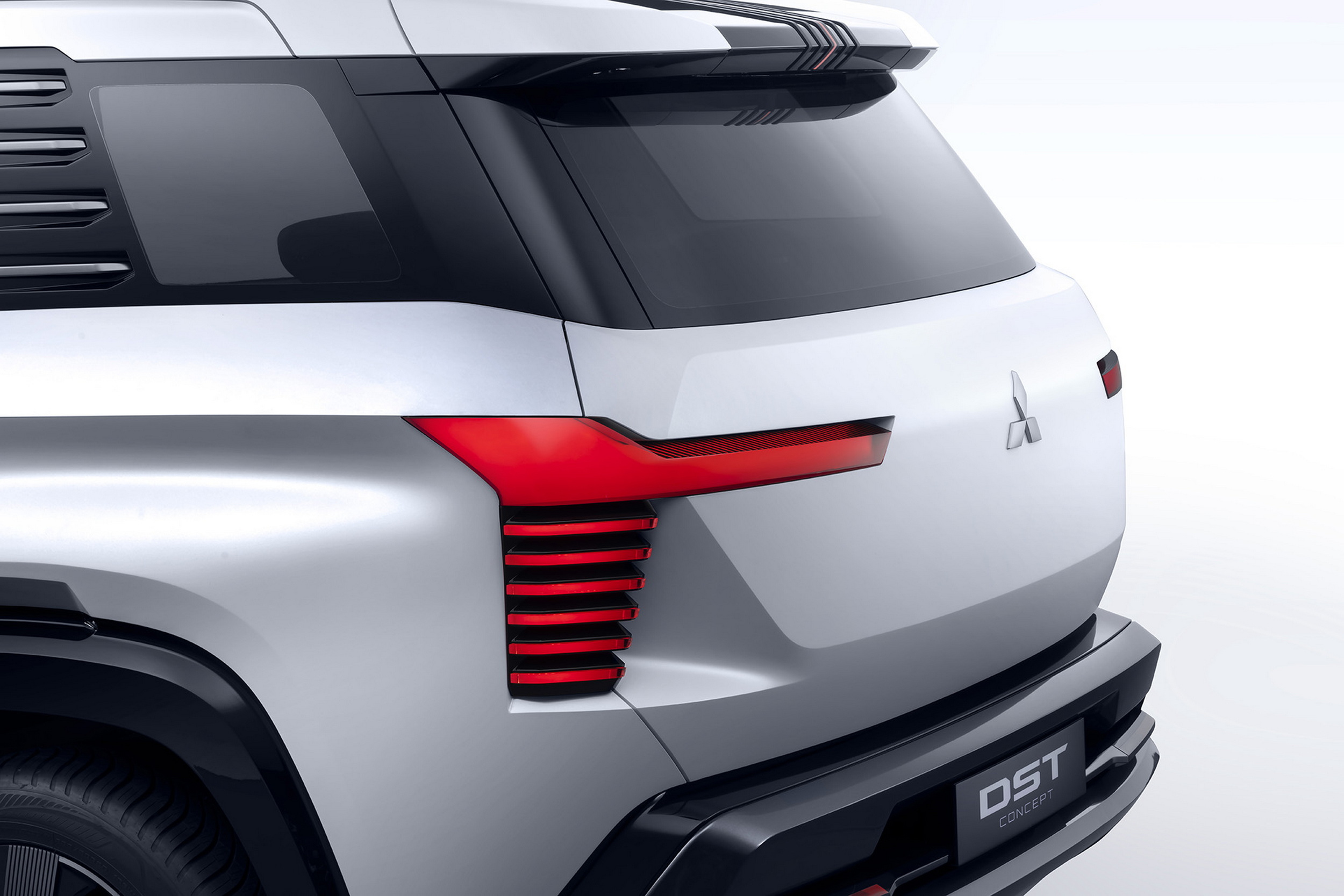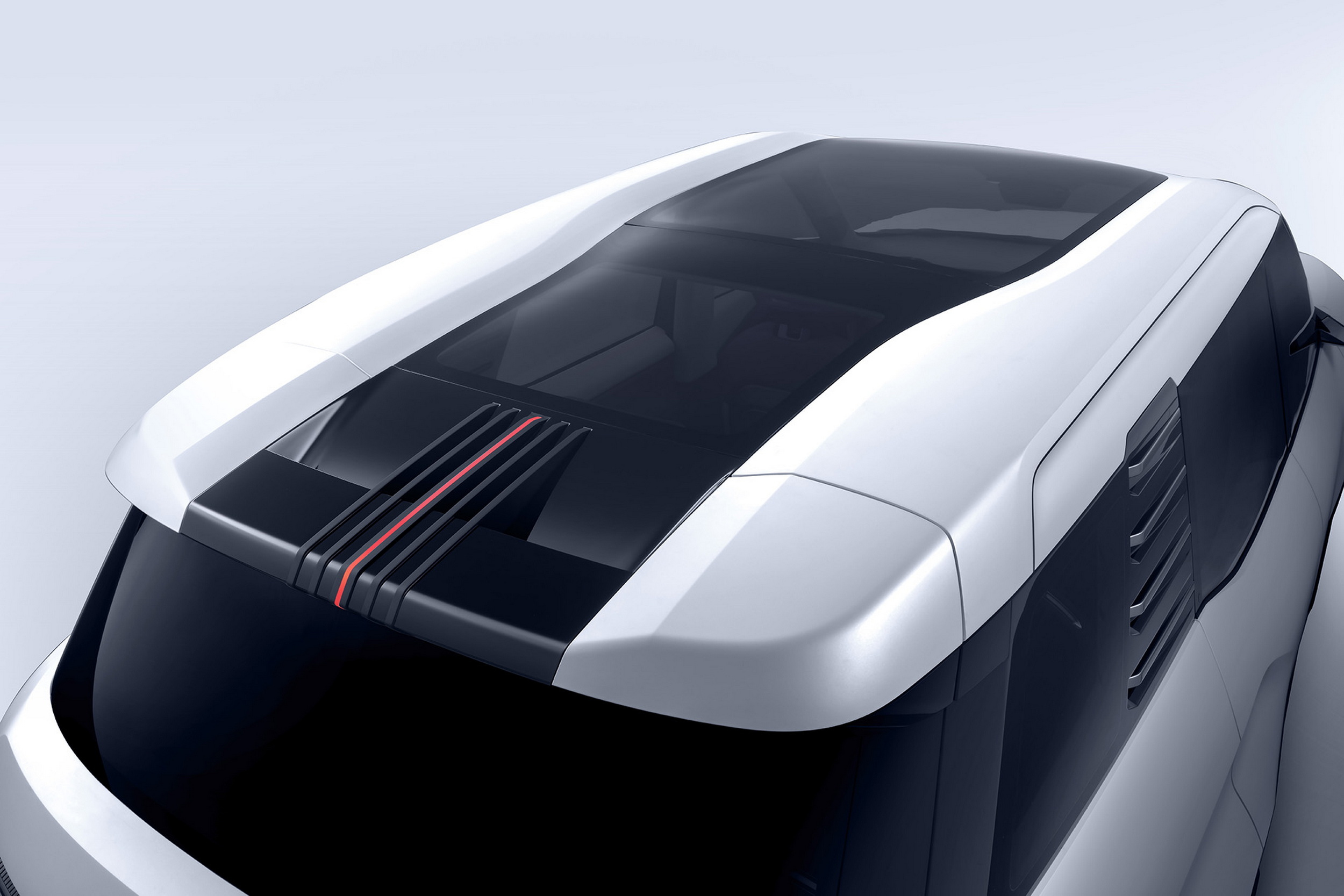- The Mitsubishi DST debuted in the Philippines, featuring rugged looks and a three-row cabin.
- The SUV rides on an FWD unibody architecture, likely shared with the smaller Mitsubishi Xforce.
- The production version is expected in 2025 as an entirely new model for ASEAN markets.
Mitsubishi has unveiled the DST, a three-row SUV concept, at the Philippine International Motor Show. More than just a crowd-pleaser, the company has confirmed that this study will spawn a production model, primarily targeting the ASEAN region, with a launch expected in 2025. The DST is Mitsubishi’s latest move to shore up its SUV lineup for these regions, though the company is staying coy about the finer details.
According to Mitsubishi, the upcoming production model will join the Xforce, Pajero Sport, and Xpander Cross in its ASEAN lineup rather than serving as a direct replacement for an existing SUV. It seems Mitsubishi is more interested in expanding its footprint than shaking things up—though whether the saturated SUV market will embrace yet another contender remains to be seen.
More: Updated 2025 Mitsubishi Outlander PHEV Delivers Impressive 844 km Range In Europe
The exterior design follows the brand’s theme of “Gravitas & Dynamism,” but there’s probably little here to get excited about once you strip out all the flashy concept bits. Its boxy proportions are standard fare for a compact to midsize SUV, sticking closely to Mitsubishi’s playbook from the past decade or so.
The large grille at the front features a honeycomb pattern hiding under a tinted transparent cover, presumably for better aerodynamics. In keeping with Mitsubishi’s typical “Dynamic Shield” styling language, the grille is flanked by chrome inserts and T-shaped LED headlights.
Sculpted fenders emphasize the oversized wheels, while skid plates attempt to add a sense of ruggedness to the DST’s design. Cameras replace side mirrors, door handles are missing, and the wraparound greenhouse with black pillars—all of which will likely be toned down for the production version.
Inside, Mitsubishi has attempted to push things upmarket with soft-touch materials on the dash and door panels. Notable features include a fully digital cockpit, a futuristic center console, and a new two-spoke multifunction steering wheel.
The front seats have integrated tables on the backrests, and second-row passengers get their own climate controls. As for the third row, it seems to occupy most of the cargo space, leaving minimal room for luggage in the seven-seat layout.
Unibody FWD Underpinnings
Mitsubishi was vague on technical specs of the SUV,, only revealing that the DST rides on a unibody platform. It’s likely a stretched version of the Xforce’s underpinnings.
The smaller Xforce, which is also an ASEAN-only model, is powered by a 1.5-liter engine producing 103 hp (77 kW / 105 PS), paired with a CVT driving the front wheels. Whether the DST will adopt a similar setup remains unclear, but its larger size would certainly benefit from more muscle under the hood.
Mitsubishi confirmed that the DST will be a FWD offering. Nevertheless, it promises it will offer safety in any weather and road conditions, thanks to the generous ground clearance and the five available drive modes (Normal, Tarmac, Gravel, Mud, and Wet)
More information on the DST will emerge in the coming months, with the production model expected to launch in the market in 2025. Until then, we’ll be keeping a close eye on how Mitsubishi plans to make this concept stand out in a crowded SUV market.




